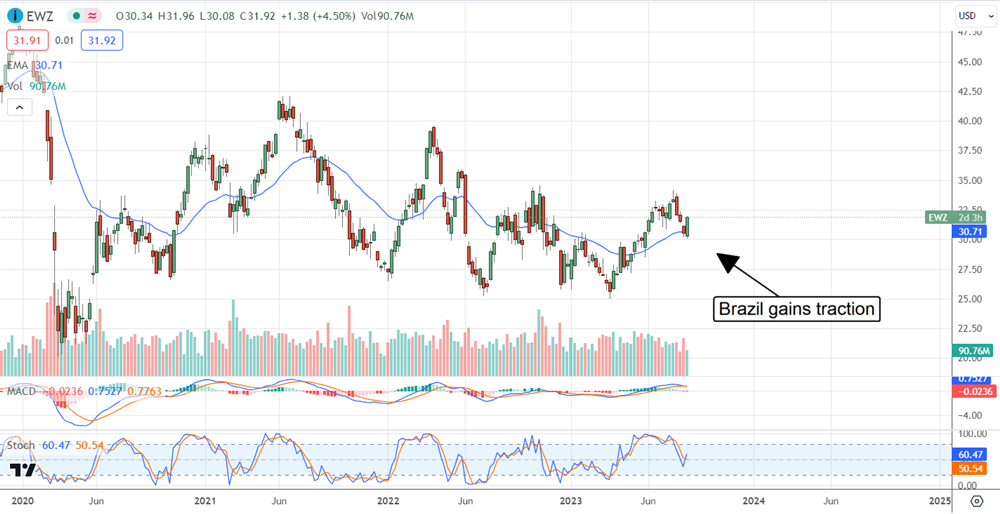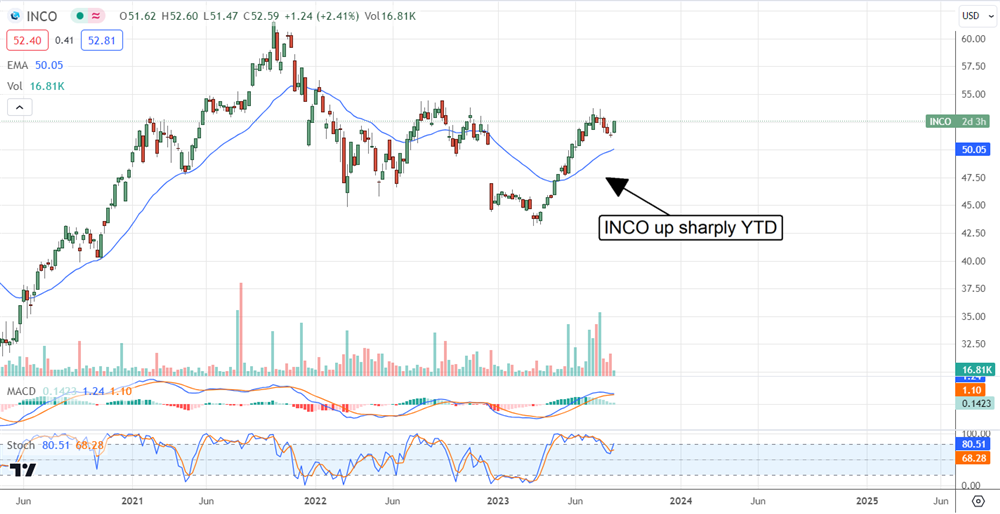
The MSCI Emerging Markets Index (NYSEARCA: EEM) is essentially flat for the year, but the signs are growing that a bottom is in, and gains will be made over the next 4 to 6 quarters. Based on the technical indications alone, the market could reverse completely and outpace the S&P 500 (NYSEARCA: SPY) over the same period.
Why? Emerging markets are expected to post above-average growth in 2024, about double the S&P 500, and this could be a cautious estimate. The tech sector drives gains, including cutting-edge segments like AI, but a fundamental story is also in play. Emerging markets are investing heavily in updating existing, outdated equipment while expanding their digital infrastructure and deepening penetration of Internet-related businesses and services.
And there is the inflation outlook to consider. Inflation is still high in the US and is expected to lead the FOMC to hike interest rates at least 1 more time. On the other hand, the outlook for EM central banks is for rate cuts because they have been ahead of the curve almost from the start of the inflation spike. Lazard Asset Management believes the EM central bankers could be on the verge of cutting rates, which would be a significant tailwind for their economies.
#1- Latin America and Brazil Are Top Growth Markets in 2023
Latin America is the hottest growth market in the EM world, led by Brazil and Mexico. Brazil is at a turning point, with growth slowing and inflation ebbing. The downturn in inflation is expected to lead the central bank to cut rates and reinvigorate the economy. Additionally, lower prices are expected to give consumers more confidence and spending power. PriceSmart (NASDAQ: PSMT) is a leading retail player operating throughout Latin America.
The iShares MSCI Brazil ETF (EWZ) is the primary ETF for exposure to Brazil. It gives the broadest exposure to mid and large-cap names while paying dividends. The dividend is substantial but variable, so be warned. The last distribution annualized to about 9% but is not regular and paid semi-annually.
The largest sectors held by EWZ are Financial, Energy, and Basic Materials, accounting for more than 60%. Within that, Vale (NYSE: VALE) and Petrolio Brasileiro account for about 20% of holdings; Vale is a large mining operation traded on the NYSE that also pays an equally erratic dividend. Both companies have seen a contraction in business due to the prices of their underlying commodities, but demand remains strong, and commodity prices have stabilized.

#2 India - Rapidly Expanding
S&P Global says that India should continue to expand rapidly after 2 years of the same. The country's youthful demographic, rising incomes, and the influx of foreign investment dollars should drive increased consumption and infrastructure growth. If the trends continue as expected, India will overtake Japan as the 2nd largest economy in the region. At that time, it will also surpass Germany, the pillar of the EU economy.
There are many ways to gain exposure to India with ETFs, but 1 that stands out is the Columbia India Consumer ETF (NYSEARCA: INCO). It tracks consumer-oriented stocks and industries inducing automobiles, F&B, household goods, and entertainment. Its top-2 holdings are Godrej Consumer Products and Nestle India, with equal 12% weightings. Godrej Consumer Products is a consumer staples company focused on everyday, health, & beauty products.
This ETF pays an equally attractive 9% yield that appears more stable. The caveat is that the ETF is only a few years old, and the history is limited. Aside from that, the fund has increased the payout for 4 consecutive years, the last 2 substantially. The Columbia India Consumer ETF can be balanced with Wisdom Tree’s India Earnings Fund ETF (NYSEARCA: EPI). This ETF is focused away from the consumer and heavily invested in basic materials, energy, and financials.
